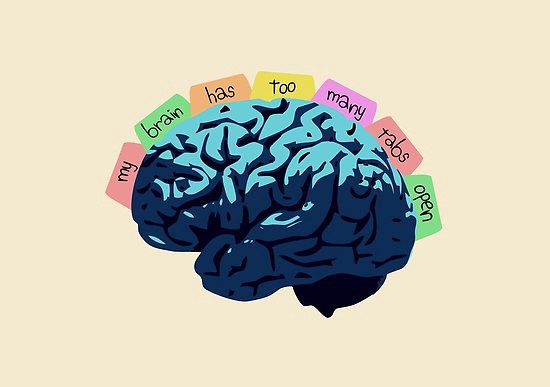How to Retrain Your Nervous System for Pain Relief

Talk to enough people with chronic pain and you'll start to hear a familiar story: It starts with mysterious pain and other symptoms, testing that doesn't lead to a diagnosis, a series of treatments that didn't work, lots of waiting, disappointment, frustration, and a patient who's left wondering, "what's causing this pain?".
But with the substantial (and growing) amount of research pointing towards nervous system hypersensitivity as the root cause of chronic pain, you'd think there'd be fewer chronic pain patients being told their pain is "all in their head".
Nervous system hypersensitivity is a complicated and hidden issue that can lead to the amplification and "chronifcation" of pain. [1] It occurs in 1 out of 4 individuals and involves all levels of the nervous system (the brain, spinal cord, and peripheral nerves).
Unfortunately, the healthcare system hasn't caught up to the research yet and continues to try to treat chronic pain with structural and mechanical approaches. Over and over physical therapy, surgery, injections, and chiropractic care fail to provide lasting pain relief.
The healthcare industry blames patients for their pain, pointing to their weight, mental health, or their coping skills, while failing to provide approaches that address those nervous system changes. Patients are forced to look for these approaches on their own, which is unfortunate because nervous system centered approaches are showing promise in the research, with long term results superior to physical therapy alone, certain pain medications, and surgical interventions.
So, what exactly is a nervous system-based approach?
A treatment approach that is neuroscience-based uses techniques that address the pain-amplifying nervous system changes, essentially getting to the root cause of chronic pain.

Here's 3 things you need to retrain your nervous system for chronic pain relief:
#1. Get educated.
In clinical research, this step is called Pain Neuroscience Education. Learning the neuroscience of pain is important because it fills the holes of missing information, explaining:
-
why symptoms don't match the results of the MRI scan,
-
why pain spreads,
-
why your structures and bodily tissues aren't the problem,
-
why you should worry less about the integrity of your joints and other bodily structures,
-
why pushing through the pain is preventing your recovery,
-
why too much rest can lead to worse pain as well,
-
why stress and other seemingly unrelated factors can trigger pain,
-
and why pain is not all in your head or all in your structures.
You may be tempted to skip this step, thinking the education isn't all that important... "just show me what I can do."
But honestly, this step is probably more important than the other two combined.
Learning the neuroscience of pain has been shown to improve pain levels, pain threshold, functional ability, mental health, physical health, negative limiting beliefs, quality of life, work performance, physical and psychological stress, brain activity, and reduce fear of movement. [1-6]

#2. Practice nervous system calming strategies
People with chronic pain often experience low (or depleted) hormone levels [7], changes in immune function [8], issues with gut health and digestion, sleep disturbances, brain fog, and fatigue. [9]
All these issues can be explained by a dysfunction of the autonomic nervous system (the system that controls whether you're in a state of rest-and-digest or fight-or-flight). [10–13]
It’s as if people with chronic pain are stuck in a chronic state of fight-or-flight, unable to take their foot off the gas to slow down and tap the brakes. Because of this, people with chronic pain need to work harder than pain-free individuals at those rest-and-digest functions.

Part of the recovery process from chronic pain involves doing strategies that force the body into a rest-and-digest state.
It's not easy but with the right strategies, routines, and systems in place, you can help calm your nervous system and make your body better at switching out of a fight-or-flight response in order to improve digestion, immune system function, memory, energy level, and sleep, which is essential for re-wiring the nervous system (see step #3). These calming strategies have lots of evidence that support their pain-relieving effects as well. [14–18]
Some examples of nervous system calming strategies include consistent sleep hygiene, consistent routines & schedules, pacing, breathing drills, meditation, mindfulness, biofeedback, heart-rate variability training, and much more.
The nervous system calming strategies that work for one person may not work for everyone, so it's important not to compare your experience to someone else’s and keep trying other strategies to find the ones that work best for you.

#3. Practice Nervous System Re-Training Drills
Before you can re-train a hypersensitive nervous system, you must understand what changes occur in the nervous system that cause pain to become chronic (see step #1).
In a nutshell, pain pathways in the central and peripheral nervous system become stronger, the structure and activity of the brain changes resulting in significantly reduced tactile acuity of the painful region, and the brain’s ability to “numb” the pain becomes reduced. [19–26]
Nervous system retraining targets each of the different changes in the nervous system using a top-down approach.

Some nervous system retraining drills help to unwire pain pathways from the neural signatures for movement, memories, and activities while others can help improve tactile acuity to improve the brain's ability to correctly process information from the painful body region.
Some nervous system retraining drills will help improve the brain’s ability to unlock its own built-in medicine cabinet to naturally dull the pain, while others work by improving the activity and structure of the brain.
Examples of nervous system retraining drills & strategies include sensory discrimination training (not de-sensitization drills), a handful of progressive brain-based drills, graded activity, pacing, and more.
The best way to incorporate these drills into your practice is to work with a physical therapist who is a chronic pain specialist, a pain psychologist, or a chronic pain coach.
Combining all three of these steps will help you gain control over the pain and over time will offer lasting pain relief.
Using only one technique at a time or only for a short period of time often has little benefit, which is why additional guidance, support, and accountability is required to put all these techniques, education, and drills together in a way that allows you to be consistent and to establish a sustainable pain management routine.
My program, the Chronic Pain Breakup Method, incorporates all three of these essential steps to give you an all-in-one neuroscience-based approach to managing your pain.
Learn more about the program here and book a discovery call with me to discuss your chronic pain condition.
References:
1. Malfliet A, Kregel J, Coppieters I, et al. Effect of Pain Neuroscience Education Combined with Cognition-Targeted Motor Control Training on Chronic Spinal Pain. JAMA Neurol. 2018;75(7):808-817.
2. Javdaneh N, Saeterbakken AH, Shams A, Barati AH. Pain Neuroscience Education Combined with Therapeutic Exercises Provides Added Benefit in the Treatment of Chronic Neck Pain. Int J Environ Res Public Health. 2021;18(16):8848.
3. Barrenengoa‐Cuadra MJ, Muñoa‐Capron‐Manieux M, Fernández‐Luco M, et al. Effectiveness of a structured group intervention based on pain neuroscience education for patients with fibromyalgia in primary care: A multicentre randomized open‐label controlled trial. Eur J Pain Lond Engl. 2021;25(5):1137-1149.
4. Galan-Martin MA, Montero-Cuadrado F, Lluch-Girbes E, Coca-López MC, Mayo-Iscar A, Cuesta-Vargas A. Pain Neuroscience Education and Physical Therapeutic Exercise for Patients with Chronic Spinal Pain in Spanish Physiotherapy Primary Care: A Pragmatic Randomized Controlled Trial. J Clin Med. 2020;9(4):1201.
5. Mills KM, Preston EB, Choffin Schmitt BM, et al. Embedding pain neuroscience education in the physical therapy management of patients with chronic plantar fasciitis: a prospective case series. J Man Manip Ther. 29(3):158-167.
6. Imai R, Konishi T, Mibu A, Tanaka K, Nishigami T. Effect of pain neuroscience education and exercise on presenteeism and pain intensity in health care workers: A randomized controlled trial. J Occup Health. 2021;63(1):e12277.
7. Tennant F. The Physiologic Effects of Pain on the Endocrine System. Pain Ther. 2013;2(2):75-86.
8. Marchand F, Perretti M, McMahon SB. Role of the Immune system in chronic pain. Nat Rev Neurosci. 2005;6(7):521-532.
9. Clauw DJ, Chrousos GP. Chronic Pain and Fatigue Syndromes: Overlapping Clinical and Neuroendocrine Features and Potential Pathogenic Mechanisms. Neuroimmunomodulation. 1997;4(3):134-153.
10. Cho DS, Choi JB, Kim YS, et al. Heart Rate Variability in Assessment of Autonomic Dysfunction in Patients With Chronic Prostatitis/Chronic Pelvic Pain Syndrome. Urology. 2011;78(6):1369-1372.
11. Kim J, Loggia ML, Cahalan CM, et al. The Somatosensory Link in Fibromyalgia: Functional Connectivity of the Primary Somatosensory Cortex Is Altered by Sustained Pain and Is Associated With Clinical/Autonomic Dysfunction. Arthritis Rheumatol. 2015;67(5):1395-1405.
12. Janicki TI, Green A, Ialacci S, Chelimsky TC. Autonomic dysfunction in women with chronic pelvic pain. Clin Auton Res. 2013;23(2):101-103.
13. Tracy LM, Ioannou L, Baker KS, Gibson SJ, Georgiou-Karistianis N, Giummarra MJ. Meta-analytic evidence for decreased heart rate variability in chronic pain implicating parasympathetic nervous system dysregulation. PAIN. 2016;157(1):7-29.
14. Mehling W, Hamel K, Acree M, Byl N, Hecht F. Randomized, controlled trial of breath therapy for patients with chronic low-back pain. Altern Ther Health Med. 2004;11:44-52.
15. Chiesa A, Serretti A. Mindfulness-Based Interventions for Chronic Pain: A Systematic Review of the Evidence. J Altern Complement Med. 2011;17(1):83-93.
16. Hilton L, Hempel S, Ewing BA, et al. Mindfulness Meditation for Chronic Pain: Systematic Review and Meta-analysis. Ann Behav Med. 2017;51(2):199-213.
17. Berry ME, Chapple IT, Ginsberg JP, Gleichauf KJ, Meyer JA, Nagpal ML. Non-pharmacological Intervention for Chronic Pain in Veterans: A Pilot Study of Heart Rate Variability Biofeedback. Glob Adv Health Med. 2014;3(2):28-33.
18. JMIR Research Protocols - Effects of a 12-Minute Smartphone-Based Mindful Breathing Task on Heart Rate Variability for Students With Clinically Relevant Chronic Pain, Depression, and Anxiety: Protocol for a Randomized Controlled Trial. Accessed December 29, 2021. https://www.researchprotocols.org/2019/12/e14119
19. Wallwork SB, Bellan V, Catley MJ, Moseley GL. Neural representations and the cortical body matrix: implications for sports medicine and future directions. Br J Sports Med. 2016;50(16):990-996.
20. Baliki MN, Chialvo DR, Geha PY, et al. Chronic Pain and the Emotional Brain: Specific Brain Activity Associated with Spontaneous Fluctuations of Intensity of Chronic Back Pain. J Neurosci. 2006;26(47):12165-12173.
21. Malinen S, Vartiainen N, Hlushchuk Y, et al. Aberrant temporal and spatial brain activity during rest in patients with chronic pain. Proc Natl Acad Sci. 2010;107(14):6493-6497.
22. Apkarian AV, Hashmi JA, Baliki MN. Pain and the brain: Specificity and plasticity of the brain in clinical chronic pain. Pain. 2011;152(3 Suppl):S49-S64.
23. Kwon M, Altin M, Duenas H, Alev L. The Role of Descending Inhibitory Pathways on Chronic Pain Modulation and Clinical Implications. Pain Pract. 2014;14(7):656-667.
24. Ossipov MH, Morimura K, Porreca F. Descending pain modulation and chronification of pain. Curr Opin Support Palliat Care. 2014;8(2):143-151.
25. May A. Chronic pain may change the structure of the brain. PAIN®. 2008;137(1):7-15.
26. Flor H. Cortical reorganisation and chronic pain: implications for rehabilitation. J Rehabil Med. 2003;35(0):66-72.
Get Pain Articles & Neuroscience Nuggets Sent To Your Inbox.
Subscribe to my Blog!






